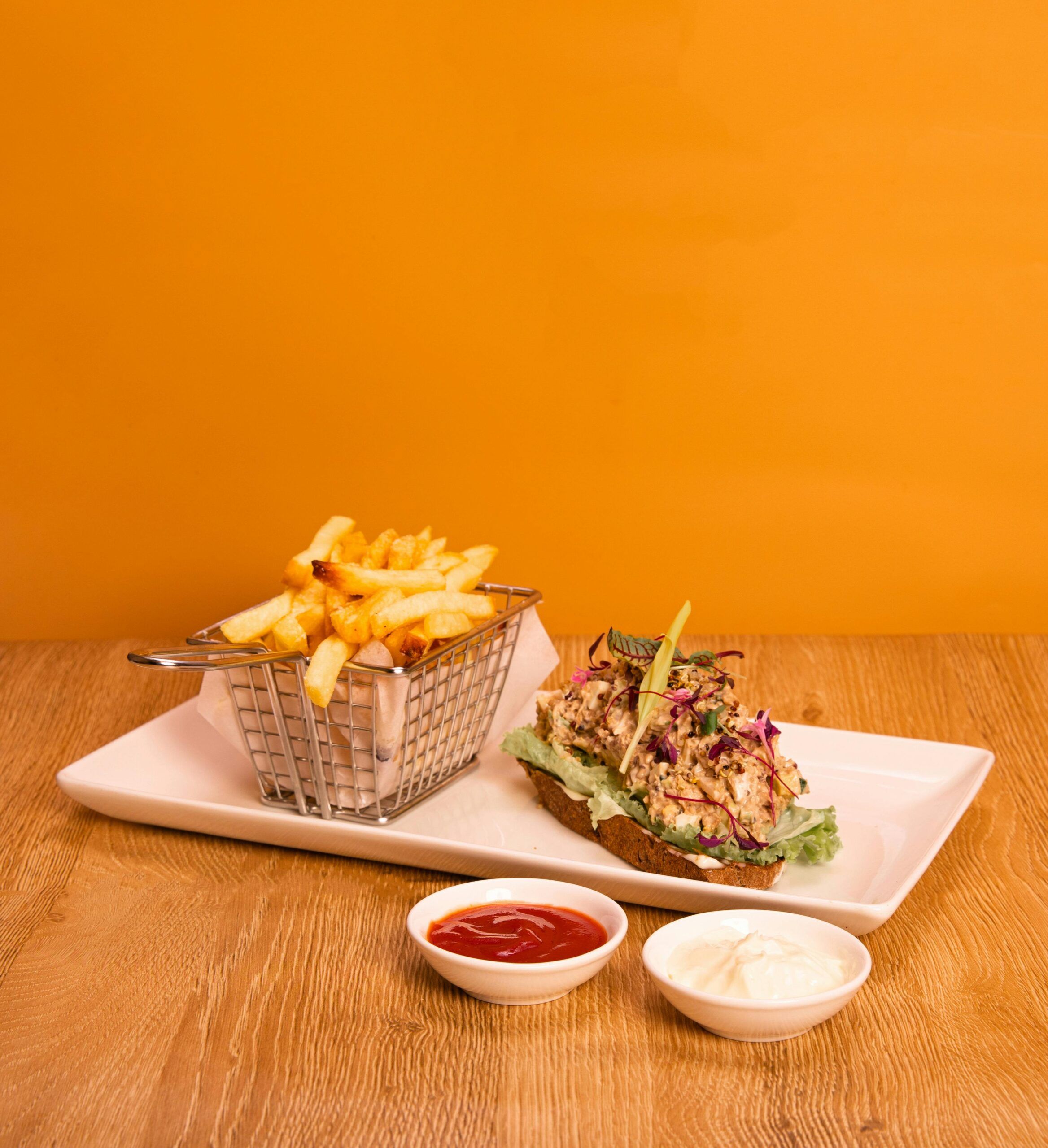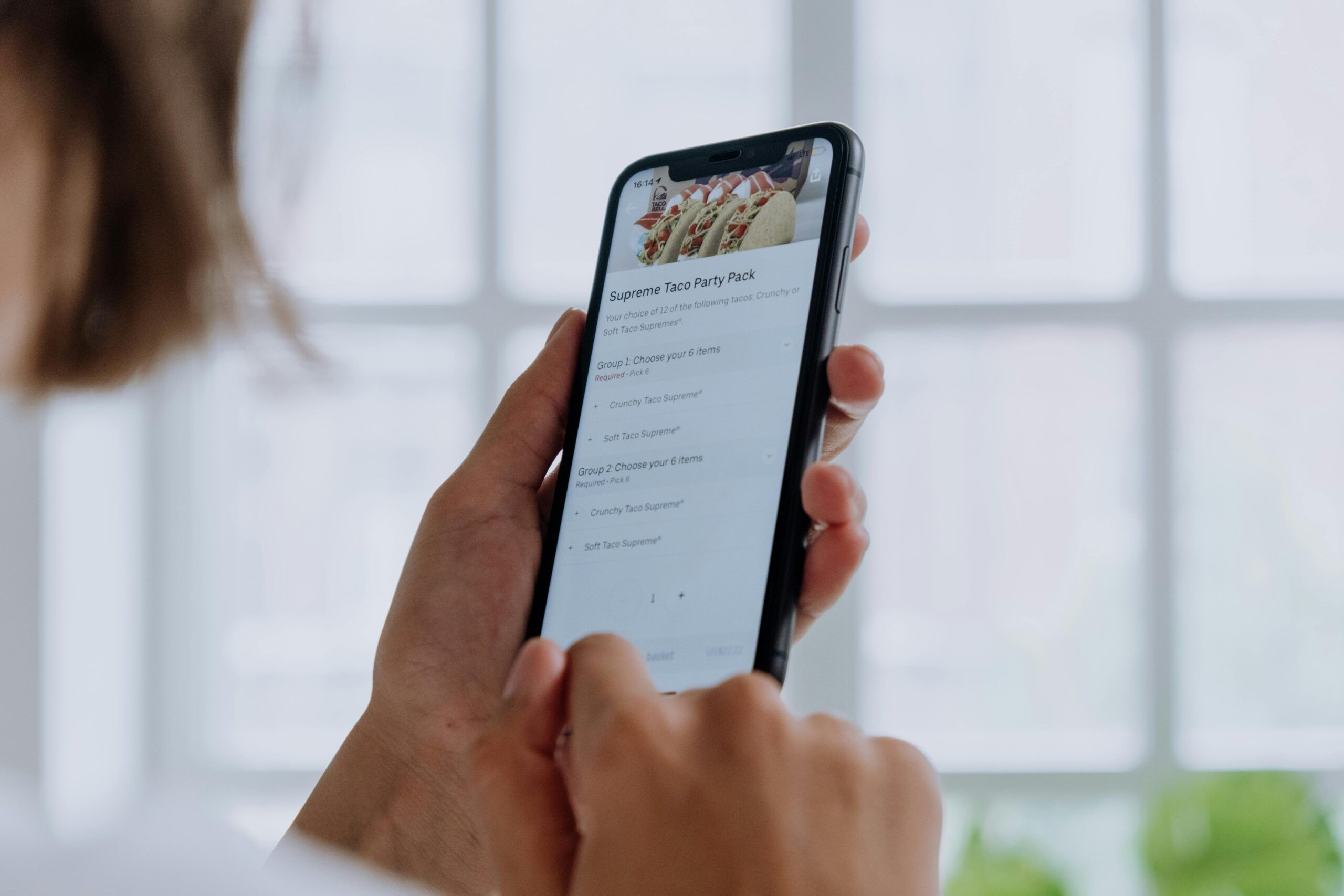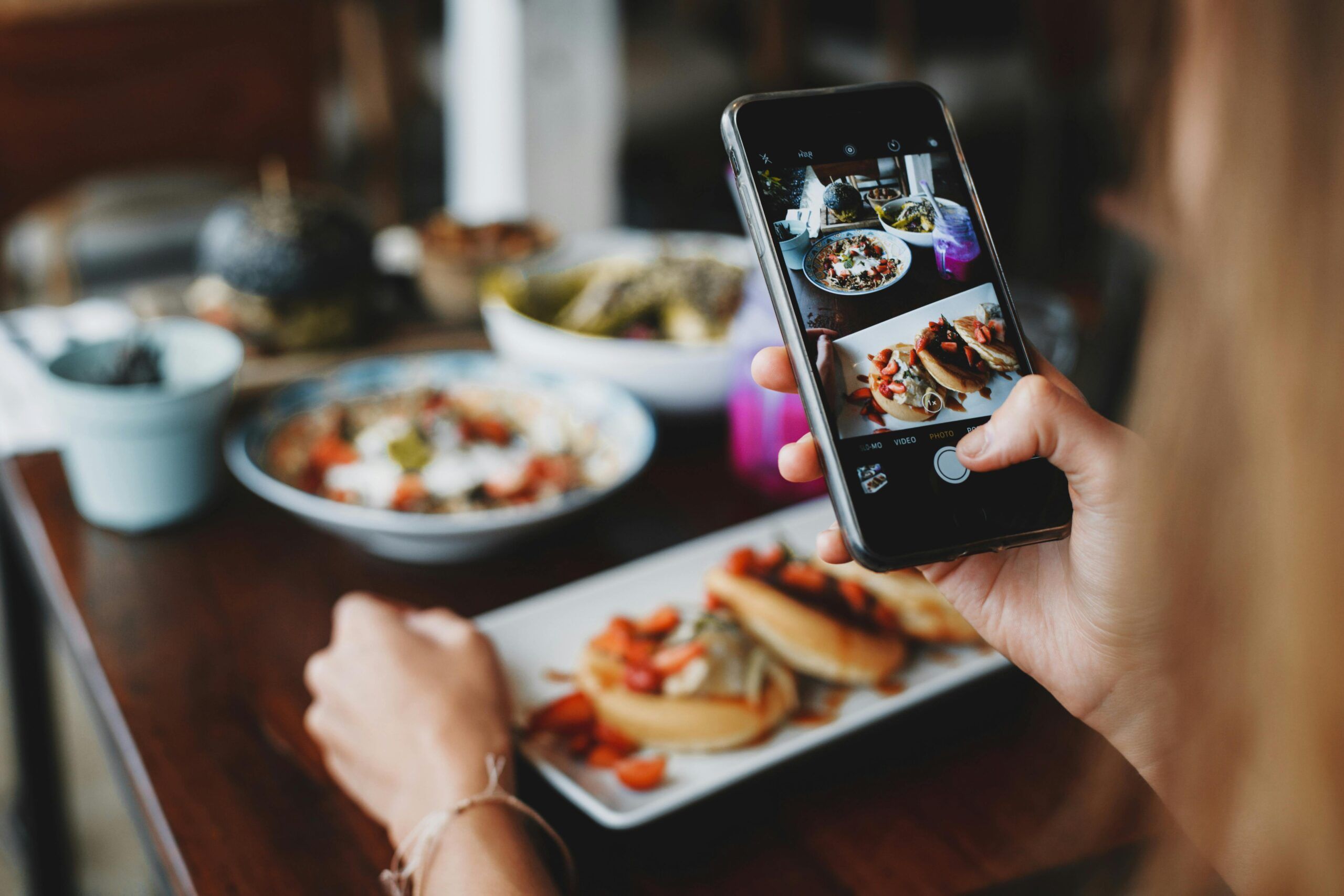- 1. Choose A Restaurant-Focused Ordering System, Not Just A Shopping Cart
- 2. Build Your Online Menu The Right Way
- 3. Set Up Delivery & Pickup Logic That Matches Real-Life Operations
- 4. Enable Payment Options Your Customers Expect
- 5. Make Ordering Available Across Devices, Without Needing an App
- 6. Get Feedback, Improve, And Turn Guests Into Regulars
- 7. Promote Your Ordering Platform Like A Pro
- 8. Set Up Reporting To Know What’s Working (And Fix What’s Not)
- 9. Bonus: Time-Saving Features To Add Later
- A Better Ordering System Starts With The Right Setup
- FAQ
Online ordering is no longer optional for restaurants. In fact, 70% of U.S. diners ordered delivery in a month, showing how essential it’s become to meet customers where they are.
If your system is clunky or confusing, customers won’t wait—they’ll move on. But setting up a better platform doesn’t require a developer. It just takes the right tools and a clear plan.
This guide will show you step-by-step instructions on how to set up and improve your online ordering. And if you want to simplify the process, Orders.co offers features like direct online ordering, menu syncing, and delivery management to help you keep more revenue and run more efficiently.
Kay Takeaways
- Choose an ordering system built specifically for restaurants, not generic eCommerce tools.
- Design a clean, visual menu with categories, pricing, and item modifiers.
- Set up realistic delivery and pickup zones that match how your kitchen operates.
- Offer secure, fast payment options like cards, Apple Pay, or Google Pay.
- Ensure your ordering platform works well on mobile—no app download required.
- Use guest feedback tools to improve service and boost positive reviews.
- Promote your direct ordering platform through your website, social media, and flyers.
- Use built-in reporting to monitor performance and adjust based on real data.
- Add time-saving tools like driver assignment, auto-order routing, or QR code menus when ready.
1. Choose A Restaurant-Focused Ordering System, Not Just A Shopping Cart
Many restaurant owners make the mistake of using generic eCommerce tools to set up their online ordering. But selling food isn’t like selling T-shirts. You need a system that understands how restaurants operate, down to the kitchen ticket and delivery handoff.
Look for software that lets you:
The right platform doesn’t just take orders—it fits into how your staff works, especially during rush hours.
Orders.co was built for restaurants from day one. Tools like consolidated restaurants’ online order management, real-time delivery settings, and AI-powered menus help independent operators save time and reduce manual tasks.
2. Build Your Online Menu The Right Way
Your menu is your storefront—and online, it’s doing all the selling. A cluttered layout or missing details can lead to abandoned orders or customer confusion. That’s why getting your menu right is one of the most critical parts of setting up your platform.
Here’s what matters most:
- Clear categories (e.g. Starters, Mains, Drinks) for easier navigation
- Accurate pricing that reflects delivery, pickup, or dine-in options
- Photos and descriptions to boost confidence and interest (good photos can increase sales by up to 30%)
- Modifiers like toppings, sides, or portion sizes that customers can select with one tap
If you manage menus on multiple platforms, manually updating them can take hours. That’s where a restaurant delivery management system like Orders.co comes in. From one dashboard, you can update your entire menu across all third-party apps and your website.
Do you need to hide an item that just ran out or change a price during peak hours? Edit one spot, and it will update everywhere.
This is what makes restaurant delivery software built for real-world operations so valuable—it saves time, reduces mistakes, and keeps your digital menu accurate at all times.
3. Set Up Delivery & Pickup Logic That Matches Real-Life Operations
Every restaurant runs delivery a little differently. Some have in-house drivers. Others rely on third-party services. Either way, your ordering platform needs to reflect how you actually fulfill orders—otherwise, it creates chaos.
Here’s what you’ll want to set up:
- Delivery zones based on distance or ZIP codes
- Minimum order amounts and fees by zone
- Pickup hours that differ from delivery, if needed
- Estimated prep and delivery times so customers know what to expect
With a reliable restaurant delivery management system, you can adjust all of this in real time. For example, if you’re short on drivers one night, you can limit the delivery range or pause orders temporarily without affecting your entire operation.
Orders.co lets you manage all of this in one place—whether you’re using your own staff or working with third-party couriers like Uber Direct. You can even route delivery requests automatically based on distance or availability, keeping your kitchen moving and customers informed.
This level of control is where food delivery software makes a difference. You’re not just getting food out the door—you’re setting clear expectations and avoiding service gaps that hurt your reviews.
4. Enable Payment Options Your Customers Expect
Once your menu and delivery zones are set, the next step is giving customers a simple way to pay. Online diners expect fast, secure checkout options—and if your platform doesn’t support their preferred method, they may not complete the order.
At a minimum, your restaurant delivery software should support:
- Major credit and debit cards
- Mobile wallets like Apple Pay and Google Pay
- Optional cash on delivery
- Saved payment options for repeat customers
Offering multiple payment methods isn’t just about convenience—it reduces abandoned carts and builds trust.
With Orders.co, you can enable secure online payments through Stripe and other trusted gateways. You decide which options to allow, and we help ensure the checkout process is smooth on both desktop and mobile.
A good restaurant delivery management system makes the transaction seamless so that customers can focus on the food, not the process.
5. Make Ordering Available Across Devices, Without Needing an App
Not every customer wants to download another app just to order dinner. That’s why your online ordering platform needs to work flawlessly across phones, tablets, and desktops—no extra downloads required.
Here’s what to prioritize:
- A mobile-optimized direct ordering website that loads fast and is easy to use
- A clean layout with large buttons, readable text, and intuitive navigation
- A branded website that feels like an extension of your restaurant, not a third-party portal
- QR code ordering for dine-in and takeout, so customers can access your menu instantly
Orders.co makes this simple with its AI-powered Website Builder. In under 30 seconds, you can launch a custom site that’s mobile-ready and supports direct online ordering. Want to let customers order from their table? Our QR Menu Tool helps you generate and manage table-specific codes from one dashboard.
Your customers shouldn’t need an app just to place an order. With the right setup, your food delivery management software turns your website into the easiest way to buy from you—anytime, anywhere.
Also, read:
- 10 Best Restaurant Online Food Ordering Systems For Seamless Restaurant Operations
- 11 Advantages Of An Online Food Ordering System For Your Restaurant
- Online Ordering System For Restaurants: How Does It Work?
- 9 Top Restaurant Trends To Keep Up For The Next Decade
- How Can The Right Online Ordering System Multiply Your Restaurant’s Delivery Success?
- 4 Effective Delivery App Strategies That Will Help Your Food Truck Succeed
6. Get Feedback, Improve, And Turn Guests Into Regulars
An online ordering system doesn’t just take orders—it’s also a direct line to your customers. And if you’re not collecting feedback, you’re missing out on insights that can boost retention and revenue.
Here’s how to make feedback part of your delivery process:
With Orders.co’s Guest Feedback Monitoring, you can receive instant alerts for new reviews, respond quickly, and even send follow-ups like discounts to win back unhappy guests.
It’s also a smart way to build social proof. With one click, happy guests can be nudged to leave public reviews, which helps boost your visibility in local searches.
When your food delivery management software includes a feedback loop, you’re not just closing the sale, you’re building long-term customer relationships that lead to more frequent, higher-value orders.
7. Promote Your Ordering Platform Like A Pro
Even the best online ordering system won’t drive sales if customers don’t know it exists. Promotion isn’t optional—it’s how you shift customers from high-fee third-party apps to your direct channel.
Here’s where to start:
- Add an “Order Online” button to your website header, social profiles, and Google listing
- Print QR codes on table tents, flyers, and takeout bags that link directly to your ordering page
- Offer incentives like “10% off the first order or loyalty points for ordering directly”
- Send SMS or email campaigns to existing customers promoting direct ordering
With Orders.co, all these tools are built in—from QR code generation to loyalty offers and AI-powered text/email marketing. You can reach customers with the right message at the right time, all from one dashboard.
The goal is simple: make your direct ordering system easier to access, better to use, and more rewarding than any third-party alternative.
And when your restaurant delivery management system includes built-in marketing tools, it’s much easier to grow your online sales without adding extra platforms or complexity.
8. Set Up Reporting To Know What’s Working (And Fix What’s Not)
If you’re not reviewing performance, you’re guessing. And in a business with tight margins, that’s risky. That’s why every restaurant delivery management system should include reporting tools that show what’s driving sales—and what’s slowing you down.
Here’s what your reports should help you track:
- Top-selling menu items
- Peak ordering times
- Performance by order channel (direct vs. third-party)
- Average order value and fulfillment time
- Missed or canceled orders
With Orders.co’s reporting and analytics feature, you can filter data by location, provider, or timeframe. Want to see which third-party app generates the most volume or which items are underperforming? It’s all there, in one place.
A strong restaurant delivery software doesn’t just accept orders—it gives you the numbers you need to improve, adjust, and grow. Because the better you understand your operation, the faster you can act on what matters.
9. Bonus: Time-Saving Features To Add Later
Once your core ordering platform is running smoothly, it’s time to consider features that will save your team hours each week without adding complexity.
Here are a few worth adding when you’re ready:
These tools make your ordering platform more powerful and help you run your day-to-day operations with fewer disruptions and better results.
Using a flexible restaurant delivery management system means you can grow at your pace and add features only when they make sense for your business.
A Better Ordering System Starts With The Right Setup
Setting up a strong online ordering platform gives your restaurant more control, better margins, and a smoother experience for staff and customers. But the right tools matter just as much as the setup.
With Orders.co, you get access to a full suite of features designed for independent restaurant operators—tools that solve the real problems you face every day without added complexity.
Restaurant Online Orders Management
Restaurant Online Orders Management brings all your online orders—website, apps, and third-party platforms—into a single tablet view. No more jumping between devices or missing tickets during rush hours.
Local Business Optimization
The Local Business Optimization tool ensures your hours, menu links, and contact info stay consistent across over 80 platforms. You stay visible in local searches and avoid outdated listings that drive customers away.
Menu Management
With Menu Management, you can update pricing, item availability, and descriptions across all platforms at once. No more duplicate edits or inconsistencies that cause order issues.
Custom Ordering Website
Using a Custom Ordering Website, you can create a branded, mobile-friendly ordering site in under 30 seconds. It’s commission-free and fully controlled by you, so you keep all your customer data and revenue.
Guest Feedback Monitoring
The Guest Feedback Monitoring tool alerts you to new reviews in real time, helping you respond quickly and resolve issues. It also encourages happy guests to leave positive public reviews.
Integrations
Integrations connect your existing POS, delivery apps, and marketing tools, so your systems stay synced. It’s ideal for restaurants using multiple platforms that need to work together without friction.
Reporting
Use the Reporting dashboard to track top-selling items, peak hours, sales by provider, and more. Filter by location or platform to make fast, informed decisions that impact your bottom line.
Dispute Management
Dispute Management helps you track and contest third-party delivery chargebacks using AI. You’ll save time, recover revenue, and get transparency on claims—all in one place.
Ready to simplify your online ordering system and boost profits? Schedule a free demo with Orders.co and take control of your restaurant’s success.
FAQ
What’s the difference between delivery management and general order processing?
Delivery management specifically refers to how orders are assigned, routed, and fulfilled—either by your own drivers or third-party couriers. General order processing includes the broader steps of accepting, preparing, and completing customer orders. Good restaurant delivery software bridges both to ensure nothing gets missed or delayed.
Can I manage multiple restaurant locations with one delivery system?
Yes, many modern restaurant delivery management systems like Orders.co support multi-location setups. You can manage menus, delivery zones, staff permissions, and reporting for each site from one dashboard—saving time and preventing errors across the board.
How do I know if I need a standalone food delivery management software or a full ordering platform?
If you only handle logistics—such as assigning drivers and routing deliveries—you may be considering standalone food delivery management software. But if you want to manage everything from menus to payments and customer data, a full restaurant delivery management platform like Orders.co is a better long-term solution.
Does delivery management software help reduce third-party commission fees?
It can. While delivery management software doesn’t eliminate third-party platforms, it helps you prioritize direct orders through your own site. That way, you can reduce reliance on apps that charge high commissions and keep more of your revenue.
How secure is customer data in a restaurant delivery management system?
Leading food delivery software providers use encrypted, PCI-compliant systems to protect payment info and customer records. Make sure the provider you choose is transparent about its data policies and offers secure integrations with payment gateways.
Is it worth investing in delivery management if I only do takeout now?
Absolutely. Even if you don’t currently offer delivery, using a delivery management system prepares your restaurant for expansion. It also improves pickup logistics, customer tracking, and future delivery capabilities—all from one place.
Where can I read more about restaurant technology trends?
The Orders.co restaurant management blog regularly publishes articles on food tech, digital ordering, and restaurant growth strategies. It’s a helpful resource whether you’re just getting started or looking to improve your current setup.



